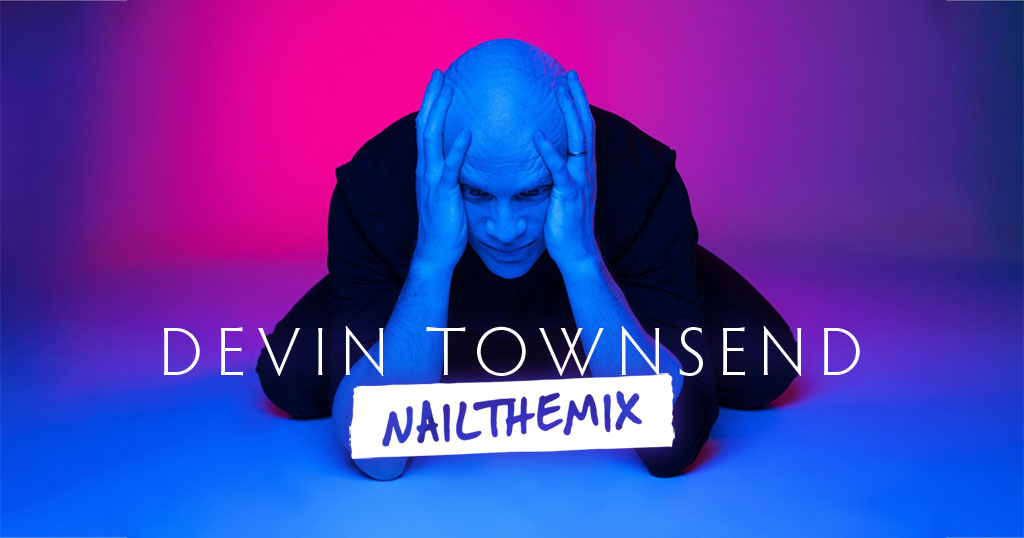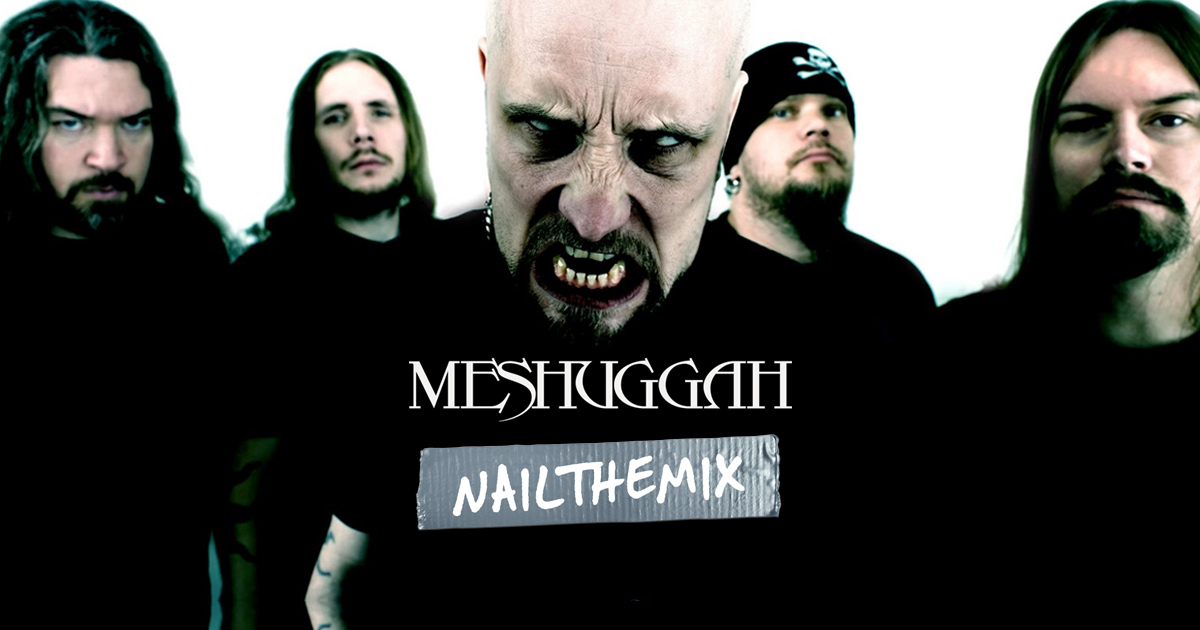
A Diminished Chord: Your Key to Dissonant Metal Mayhem
Nail The Mix Staff
Ever wonder what makes that one riff sound so damn wrong in the best way possible? That gnarly, unsettling vibe that just screams "metal"? Chances are, you're hearing the beautiful ugliness of a diminished chord. These bad boys are sonic tension incarnate, and when you know how to wield them, they can take your metal tracks from "pretty heavy" to "holy sh*t, that's brutal."
If you're already producing music, you've probably bumped into diminished chords. But are you truly milking them for all their dissonant glory in your metal productions? Let's dive into how these chords work, why they're perfect for metal, and how to make them punch through a dense mix without turning into a muddy mess.
So, What Exactly IS a Diminished Chord?
Alright, let's get the theory out of the way, quick and dirty, so we can get to the fun stuff. No boring lectures here, just the need-to-know for metalheads.
The Gritty Details: Intervals & Symmetry
A basic diminished triad is built with a root, a minor third (b3), and a diminished fifth (b5). For example, a C diminished chord (Cdim) is C – Eb – Gb. Notice that diminished fifth? That's a tritone away from the root, and the tritone is often called "diabolus in musica" – the devil in music. Sounds pretty metal already, right?
Then you've got the diminished seventh chord, which adds a diminished seventh (bb7 – yes, that's a double-flat seventh, or a major sixth enharmonically). So, Cdim7 is C – Eb – Gb – Bbb (which is an A).
The cool thing about fully diminished seventh chords is their symmetry: they're essentially a stack of minor thirds. This symmetry means any note in the chord can function as the root, and they repeat every three frets on your guitar. Handy for some chaotic-sounding runs!
Why Should Metal Musicians Care?
Simple:
- Instant Tension & Dissonance: This is their bread and butter. Nothing creates that "on-edge" feeling quite like a diminished chord.
- Wicked Passing Chords: They're amazing for smoothly (or not-so-smoothly) connecting other chords, especially chromatically.
- Horror Movie Vibes: Want to make something sound eerie, unsettling, or just plain evil? Diminished chords are your go-to.
- Unexpected Flavor: They can break up predictable chord progressions and add a touch of sophistication (or pure chaos) to your riffs and solos. Think bands like Slayer, Opeth, or Meshuggah – they know the power of dissonance.
Slamming Diminished Chords into Your Metal Riffs
Knowing what they are is one thing; using them effectively in a metal context is another. Here’s how to inject that diminished flavor into your tracks.
As Twisted Passing Chords
This is a classic. Use a diminished chord to bridge the gap between two more "stable" chords. For example, if you're going from an E minor to an F# minor, try sticking an F diminished chord in between (Em -> Fdim -> F#m). That Fdim acts as a leading-tone chord to the F#m, creating a really strong pull.
- Actionable Tip: On guitar, try moving a simple power chord shape up or down by one fret, then shifting one of the notes to form the diminished chord before resolving. For instance, an E5 (E-B) going to F5 (F-C). You could insert an E diminished (E-G-Bb) or an F diminished (F-Ab-B) in between. Experiment with which note you move to create the diminished feel.
For Sheer Dissonant Impact
Sometimes you don't want subtlety. You want a sonic punch to the gut. Diminished chords are perfect for this.
- Breakdown Intros: A lone, heavily distorted diminished chord ringing out before a massive breakdown? Yes, please.
- Stabs & Accents: Use them as quick, sharp stabs to emphasize a lyric or a rhythmic hit. Think of how bands like The Dillinger Escape Plan or Converge use jarring, dissonant chords.
- Highlighting the Tritone: Ensure your riff or chord voicing really emphasizes that tritone interval for maximum "evil" effect.
In Solos and Lead Lines from Hell
Diminished arpeggios are a staple for metal shredders.
- Symmetrical Shredding: Because diminished seventh arpeggios are symmetrical (all minor thirds), you can move the same shape up and down the neck in minor third intervals (3 frets) and it'll always be in key with itself. This is great for fast, flashy, and unsettling runs. Think guitarists like Marty Friedman or Jeff Loomis.
- Outside Playing: Use diminished patterns to briefly step outside the main key for added tension before resolving back.
Making Diminished Chords Cut Through a Dense Metal Mix
Okay, so you’ve written a killer riff full of diminished goodness. Now, how do you make sure it doesn’t sound like a fart in a wind tunnel when the full band kicks in? These chords can be tricky because their close intervals can easily turn into a muddy mess.
Guitar Tone is Your Foundation
- Amp Choice: You need an amp that can handle complex harmonies with clarity even under high gain. Classics like a Peavey 5150/6505, a Mesa Boogie Dual Rectifier, or an ENGL Powerball are great starting points. Amp sims like Neural DSP’s Archetype series (Gojira, Nolly, Plini) or STL Tones (ToneHub, Amphub) offer incredible flexibility here.
- Cab & Mics: The trusty Celestion Vintage 30 speaker is a metal standard for a reason. Mic it up with a Shure SM57 and/or a Sennheiser MD421. You might even try the Fredman technique (two SM57s, one angled) to capture different facets of the tone, which can help with note definition.
- Pedal Power: A tight noise gate like an ISP Decimator or a Fortin Zuul is non-negotiable for cleaning up the space between those dissonant stabs. For added articulation before your amp, a slight boost from something like a Maxon OD808 (gain low, level high) or a Fortin Grind can really help those notes pop.
EQ: Carving Space for Dissonance
Diminished chords, with their tight voicings, can get real messy, real fast in the low-mids.
- Surgical Cuts: The 200Hz-500Hz range is often where mud congregates. Use a parametric EQ like FabFilter Pro-Q 3 (or your DAW’s stock EQ) with a relatively narrow Q (bandwidth, maybe 1.5-3) and dip this area on your rhythm guitars. This makes space for the bass and kick drum. Don’t be afraid to be aggressive if needed, but listen in context.
- Boosting for Definition: A slight boost in the upper mids (say, 1.5kHz – 4kHz) can bring out the pick attack and help individual notes within the chord stand out. Be careful not to make it too harsh or honky.
- Taming the Fizz: Just like with any high-gain tone, you might need to hunt down and notch out any nasty high-frequency "fizz" (often above 6kHz-8kHz) that can make diminished chords sound grating rather than aggressive.
Want to dive deeper into EQ? Check out our strategies for mixing modern metal on our EQ hub page.
Compression: Friend or Foe?
With harmonically complex parts like diminished chords, heavy compression can sometimes smear the notes together and reduce clarity.
- Subtlety is Key: If you're compressing rhythm guitars playing diminished chords, aim for subtle dynamic control rather than aggressive squashing. A few dB of gain reduction on peaks can help even things out.
- Plugin Choices: An SSL-style bus compressor (like Waves SSL G-Master Buss Compressor or Slate Digital FG-Grey) on a guitar bus can provide glue. For individual tracks, something versatile like an Empirical Labs Distressor (real or plugin version like Slate's FG-Stress) in Opto mode can be smooth.
For more on taming dynamics in metal, explore our Compression hub page.
Arrangement & Layering: Strategic Sickness
- Placement Matters: Don't just pepper diminished chords everywhere. Use them strategically for maximum impact. A well-placed diminished chord is far more effective than a dozen thrown in randomly.
- Voicing for Clarity: Higher voicings of diminished chords often cut through a mix better than lower, denser ones, especially if the bass guitar is already filling up the low end.
- Stereo Widening: If you're layering guitars (e.g., quad-tracking), consider slightly different voicings or inversions of the diminished chord panned hard left and right. This can create a massive, unsettling stereo image.
- Bass Guitar's Role: The bass can either double the root of the diminished chord, play a pedal tone underneath it to anchor the harmony (or create even more tension!), or outline a different part of the chord. Crucially, make sure the bass and guitars aren’t fighting for the same low-mid frequencies.

100+ Insanely Detailed Mixing Tutorials
We leave absolutely nothing out, showing you every single step
Beyond Guitars: Diminished Sounds in Synths & Samples
Modern metal often incorporates synths, strings, and sound design. Diminished harmony is gold here too!
- Sinister Synths: Use diminished chords or arpeggios in synth pads (using plugins like Spectrasonics Omnisphere or Arturia Pigments) to create dark, atmospheric textures.
- Orchestral Stabs: A diminished chord played by a string section or brass (using sample libraries like those in Native Instruments Kontakt – think Damage 2 for aggressive hits or cinematic string libraries) can add epic, horror-film tension.
- Mixing Them In: EQ these elements much like guitars, carving out space and ensuring they complement, rather than clash with, the main distorted guitar parts. High-pass filtering is your friend here to keep the low end clean.
Taking Dissonance to the Next Level
Using a diminished chord effectively is about understanding its inherent tension and then making smart production choices to ensure that tension translates in the mix. It’s about crafting parts that are both musically interesting and sonically powerful.
These techniques are killer starting points. But imagine seeing seasoned pros take these concepts and apply them in real-world mixing sessions, dialing in tones, EQing complex chords, and making every dissonant note hit with maximum impact. That’s exactly what you get with Nail The Mix. Every month, you get the raw multitracks from huge metal songs and watch the original producers mix them from scratch, explaining every plugin choice, every EQ tweak, and every fader move.
If you’re ready to go beyond just knowing what a diminished chord is and want to master how to make every element in your metal productions sound absolutely monstrous, it’s time to Unlock Your Sound: Mixing Modern Metal Beyond Presets.
So go ahead, start sprinkling (or slathering) those evil-sounding diminished chords into your riffs. Experiment, push the boundaries, and make some beautifully brutal music!
Get a new set of multi-tracks every month from a world-class artist, a livestream with the producer who mixed it, 100+ tutorials, our exclusive plugins and more
Get Started for $1





